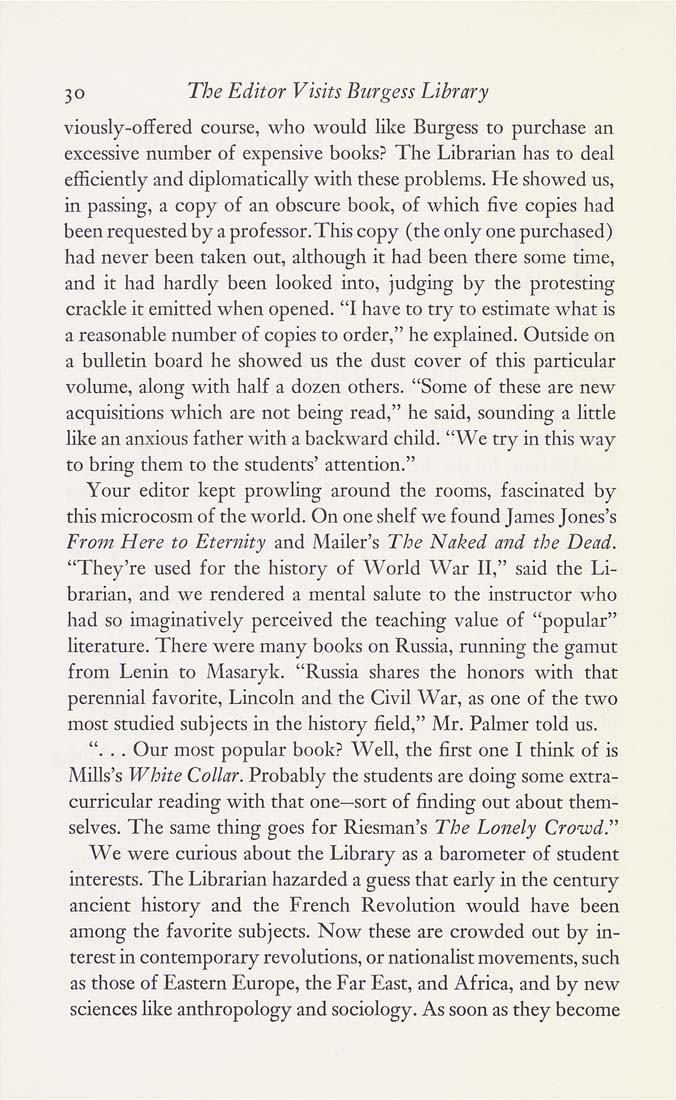Columbia Library columns (v.2(1952Nov-1953May))
(New York : Friends of the Columbia Libraries. )
|
||
|
|
|
|
| v.2,no.2(1953:Feb): Page 30 |

30 The Editor Visits Burgess Library viously-offered course, who would like Burgess to purchase an excessive number of expensive books? The Librarian has to deal efficiently and diplomatically with these problems. He showed us, in passing, a copy of an obscure book, of which five copies had been requested by a professor.This copy (the only one purchased) had never been taken out, although it had been there some time, and it had hardly been looked into, judging by the protesting crackle it emitted when opened. "I have to try to estimate what is a reasonable number of copies to order," he explained. Outside on a bulletin board he showed us the dust cover of this particular volume, along with half a dozen others. "Some of these are new acquisitions which are not being read," he said, sounding a little like an anxious father with a backward child. "We try in this way to bring them to the students' attention." Your editor kept prowling around the rooms, fascinated by this microcosm of the world. On one shelf we found James Jones's From Here to Eternity and Mailer's The Naked and the Dead. "They're used for the history of World War II," said the Li¬ brarian, and we rendered a mental salute to the instructor who had so imaginatively perceived the teaching value of "popular" literature. There were many books on Russia, running the gamut from Lenin to Masaryk. "Russia shares the honors with that perennial favorite, Lincoln and the Civil War, as one of the two most studied subjects in the history field," Mr. Palmer told us. ". . . Our most popular book? Well, the first one I think of is Mills's White Collar. Probably the students are doing some extra¬ curricular reading with that one—sort of finding out about them¬ selves. The same thing goes for Riesman's The Lonely Crowd." We were curious about the Library as a barometer of student interests. The Librarian hazarded a guess that early in the century ancient history and the French Revolution would have been among the favorite subjects. Now these are crowded out by in¬ terest in contemporary revolutions, or nationalist movements, such as those of Eastern Europe, the Far East, and Africa, and by new sciences like anthropology and sociology. As soon as they become |
| v.2,no.2(1953:Feb): Page 30 |







